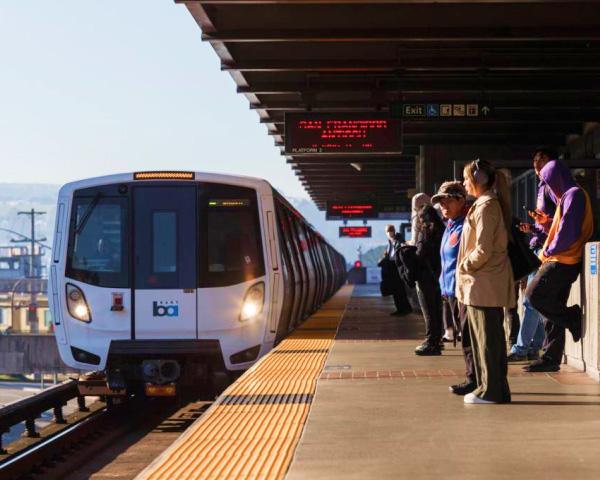Five Bay Area counties have now made it to the less restrictive red tier of the state's coronavirus risk-assessment system, which dictates the limitations imposed on businesses and activities in each county as the region continues to contend with COVID-19.
Four counties — Alameda, Contra Costa, Sonoma and Solano — remain in the purple tier, the most regulated category. Dr. Bela Matyas, Solano County's health officer, spoke with KQED's Tara Siler this week about the latest local developments and his views on reopening.
The following is edited for length and clarity.
What will it take for Solano County to move from the purple tier to the less restrictive red tier?
Matyas: There are two ways.
Either we can reduce our reported daily case rate to less than 7 per 100,000 people per day — which for us means getting below 31 reported cases daily — and do that for 14 days.
The other way, the way that I think we are most likely to move to red, is our health equity metric, which is good enough to qualify us for the [even less restrictive than red] orange tier.
And so that will allow us, given our current case rate, to potentially go into the red tier as early as next week.
The red tier allows for indoor activities, including dining at 25% capacity. Do you think limited indoor dining is a good idea or would you prefer to keep dining to outdoors?
I think that if it is performed safely indoors, it is perfectly appropriate, and it's actually preferable given the weather. Not all of our restaurants, given the limitations that we have in our county, can do outdoor dining. So the indoor dining option is far superior from the standpoint of helping out that particular industry try to get back on its feet. And certainly patrons have indicated a preference for indoor over outdoor. The key is to make sure that the sector guidelines are adhered to carefully.
How concerned are you that this reopening, though, could land Solano County right back in the purple tier?
I think there has been an underlying assumption that reopenings have led to surges. I can tell you with certainty that in Solano County, that is definitely not true. We have looked closely at what is going on when we are experiencing surges, and in each of them, it was people getting together with family and extended family and friends in their own home. It was the holiday season. That's where the disease was spreading. They weren't doing it at restaurants or at bars.
So I think the reopening will not increase the risk. What would increase the risk is the return of holiday season and people getting together with their family.
The CDC director is very concerned that progress against the virus could be lost with the spread of the variants. How concerned are you?
I think the variants do pose a genuine risk of increased transmission. But I'm hoping that here in Solano County, before any variants can take hold, we will have enough people vaccinated to provide adequate protection against that type of transmission. And since we are actively vaccinating the food and agriculture workforce, and pretty soon we'll be vaccinating people under the age of 65, I'm hopeful there will be enough vaccine protection in our community so that the variants will not pose a risk just because businesses are reopening.
How is the vaccine supply holding up?
It's definitely gotten better over the past week or two. There was an interruption in supply because of the storms across the Midwest a couple of weeks ago, and we were really running low. But we have caught up with the vaccine from that time period, and we're able to vaccinate many more people now.
With the approval of the Johnson & Johnson vaccine, we're anticipating more of a supply increase as well. So I would say that obviously we could use more vaccine. I'm sure that we could vaccinate three or four times as many people as we are if we had enough. But we'll take what we get. And right now, I would say that our supply is good enough that we are making meaningful progress. We have at this point vaccinated probably more than a third of those eligible individuals that want to be vaccinated.
The Johnson & Johnson vaccine requires only one dose instead of two. What populations do you think should be getting it?
I think there are two groups. One is those who are highly transient and for whom coming back for a second dose is very difficult. The homeless clearly come to mind, although not all homeless are equally transient. The other group is those individuals who have held off on getting the Pfizer or the Moderna vaccine because they don't want two shots. And I've been surprised by how many people have made that decision that they wanted to wait for Johnson & Johnson because they only want one shot, knowing fully that it comes with a different level of protection. I think those two groups are pretty sizable populations.
What do you think is the most dangerous thing people are doing right now in this period when most of us are waiting for a vaccine?
I think clearly, interacting with family and friends in a way that does not provide protection. Most people have developed good habits when interacting with strangers or in a public space. But a lot of people continue to get together in a way that transmits disease. Letting your guard down and assuming your friends and family are safe is the most dangerous thing people are doing

